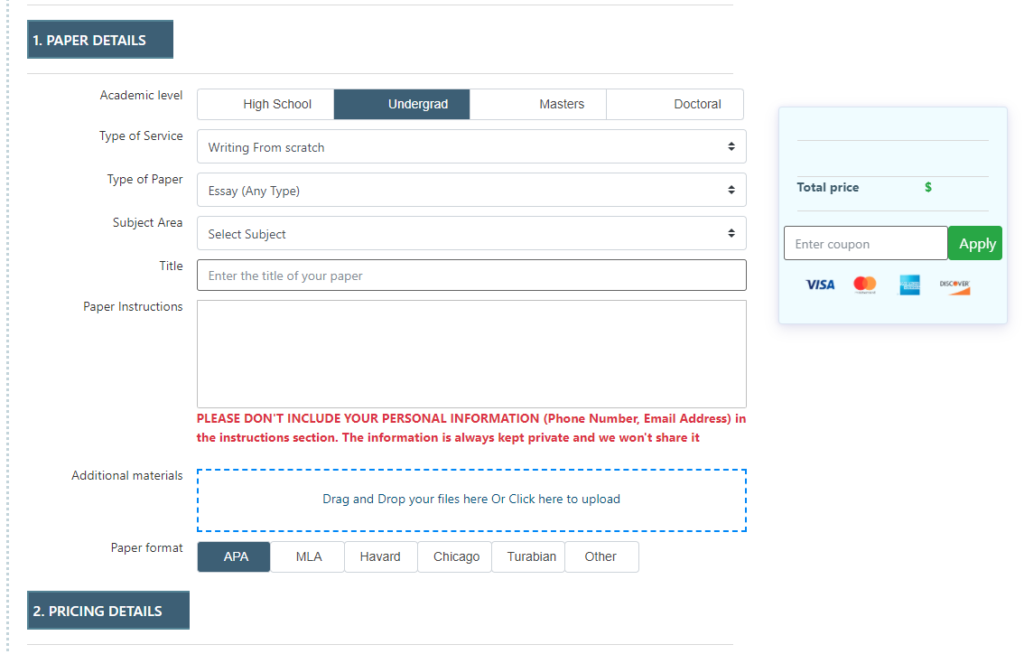Assignment 6: Redesign Project
Design is an increasingly important facet of technical communication. With even basic computer programs like Microsoft Word, writers can adjust the visual aspects of their documents to enhance communication and clarity. They can also design text in sophisticated ways. This assignment will require you to redesign a document for a specific rhetorical situation and to reflect on the decisions you made in the design process.
This assignment functions as something of a final exam. Your redesign should demonstrate that you understand the principles and practices of technical communication discussed in this course. You can’t cover everything, but you should work to convince me that you understand the key ideas we have been working with this semester. The process you will follow in this assignment is relatively straightforward. You will identify (with my approval) a document to be redesigned and context for that redesign. You will then redesign the document based on a rubric I will provide. Finally, you will write a reflective commentary that discusses why you redesigned the document the way that you did.
This redesign project is not simply an academic exercise meant to test what you have learned (although I care about that!). Technical communication documents are living documents; technical communicators constantly redesign their work in order to improve it. For example, visit the Way Back Machine at http://www.archive.org. At this site, you can enter a website aIDress and see how the site has evolved over time. Try looking at the Penn State website. You will see how the site has developed over more than a decade of both textual and visual revisions. With each version of the site, the technical communicators were working to improve its effectiveness for users.
There are three steps to this assignment:
1. Choose a piece of technical communication to redesign. Look for something on a topic that you already know something about. That way you’ll be in a good position to rethink the content as well as the design. I would also encourage you to look for a relatively brief document. Although you can redesign a section of a longer document, working with a brief document should prove to be easier. By brief, I mean approximately 3 to 5 pages of written text or an equivalent amount of a website.
For examples of the scope of your redesign, let’s look at the documents you analyzed in your Basic Rhetorical Analysis. (These are just examples; you’ll be choosing new documents for this assignment.) The first was an application for low-income home energy assistance. At four pages this is a relatively short document, but is complex enough (it contains enough different elements) to be appropriate for the assignment. You would redesign the whole thing. The second document was a booklet for a Science Fair. Although this document is 16 pages, the body pages are all relatively similar in structure. You might choose to redesign the title page, introduction, one or two body pages, and the glossary. That way you’ll have a number of different components to work with in different ways. (You won’t be able to meet the requirements of the assignment if the document is too simple or uniform €“ five body pages would not be enough.) The third document was a guide for developing a first aid program. This is a very long document, much too long for the assignment. But you could easily pick one section to redesign €“ each section has a number of document elements for you to work with.
You will submit your document to me for approval before you begin redesigning.
2. Redesign your chosen document. This will involve redesigning both textual and visual aspects, paying attention to the rhetorical context for the document. I provide specific areas for redesign below. This assignment assumes that you will use at least a word processing program to redesign your document. (You may also use photo editing, desktop publishing, web design, or other software.) In other words, you should not hand-draw, photocopy, or paste-up the new version. Rather, you should re-create the document as a new file that includes your changes. (You have to be able to submit your project via the drop box).
3. Write a reflective memo to me that explains why you redesigned the document the way that you did. (I am your audience.) Follow the memo format described by Markel in his chapter on writing memos. To see sample memos, see figures 14.11 and 14.12 in the textbook.
a. Be concrete in your discussion. That is, use examples from the document as you make your key points.
b. Be sure to analyze and not just describe your redesign. This will require you to justify both content and design decisions.
c. Be sure your reflective points are well organized.
Your analysis should be at least 2 single-spaced pages (approximately 1000 words). However, don’t mistake brevity for superficiality. I’m looking for a high-quality reflection that shows you can talk in relatively sophisticated ways about the techniques and practices of technical communication.
Redesign Areas
You can redesign your document in any number of ways. The list of considerations below is broken into general categories to help you manage this large amount of information. While your reflective memo should not go through this list item-by-item (some items will be more important than others for your redesign, and some may not be important at all), it should take each larger category into consideration.
Note: The Genre Considerations category references some chapters we did not read for class. If your selected document falls into one of these genres, read the chapter to help you with the redesign.
Rhetorical Considerations
€¢ Audience (Ch. 5)
€¢ Purpose (Ch. 5)
€¢ Context (Chs. 12, 5)
€¢ Persuasiveness (Ch. 8)
€¢ Ethical and legal (Ch. 2)
Textual Considerations
€¢ Organization (Ch. 7)
€¢ Style (Chs. 9, 10)
€¢ Textual coherence (Ch. 9)
Visual Considerations
€¢ Design (Ch. 11)
€¢ Graphics (Ch. 12)
€¢ Visual coherence (Ch. 9)
Genre Considerations
€¢ Job application (Ch. 15)
€¢ Definitions and descriptions (Ch. 20)
€¢ Instructions and manuals (Ch. 20)
€¢ Reports (Chs. 17-19)
€¢ Proposals (Ch. 16)
€¢ Websites (Ch. 11, 13)
Evaluation Criteria
I will evaluate your redesign projects according to these criteria:
€¢ Content: The redesign represents a significant revision of the original document. In other words, the revision should not be superficial or minor.
€¢ Effectiveness: The redesign improves on (and does not just change) the document’s rhetorical effectiveness. The redesign speaks better to the audience, purpose, and context. The reflective memo discusses why the redesign is more effective than the original.
€¢ Professionalism: The redesign adheres to not just rhetorical but conventional patterns in technical communication. The redesign and memo are free of grammatical and mechanical errors.
€¢ Reflection: The reflective memo analyzes more than it describes. It focuses on why you did what you did rather than what you did. I can see what you did in the redesign itself, so the memo should provide a justification for your redesign choices.
€¢ AND: The redesign and memo demonstrate that you can understand and apply the many elements of technical communication discussed in the course.
Designing Environmental Science Projects
Note
for
This booklet is intended to provide stud 6 to 8 with id ents in grade eas and reso s urces for deve mental scien loping enviro ce fair project ns, specifically reducing, reu in the areas sing, and recy of cling waste m Environmenta aterials. l terminolog y and topics are aIDresse in this bookle d without in-d t epth definitio under the ass n or discussio umption tha n t , students hav to these topic e been expose s already thro d ugh a classro mental scien om environce unit. Som e kinds of ex more time th p e ri an others to ments requir yield results. e cuss your inte Be sure to dis nded time fr ame when he lping students deci de on a proje ct.
Teachers:
: s t n e d e tu t o N for S
nnme o r i v as en own tains ide r u o n d y o ning ooklet c using, an e g i s e e on d his b decid ng, r rted riment, t n reduci cher to ailor a t s a u o to t expe r ur te et yo ects To g ence fair for proj with yo and how r teache o i k u s r c d n o s o tal e to bles, ld w estio ask y sugg ou shou you’d lik ou can ing varia ble to d n a t .Y a n .Y eeds avail sed in rojec cling , defi recy ind of p o your n pothesis ment is u k t y rms ip what eriment cting a h d of equ waste te age 10. u p in d xp ts an e lp constr what k tant soli ssary on imen g r r e o n l i e o h g n p p i r x fo im rm the of e re to s for d in dete inds so be su k and efinition be foun e om ts, n D hat s eld resul t you. oklet ca e t i bo to y ld no this shou others imit. u o l ,y an Also nger th e a time o l v take if you ha k chec
Contents
Getting Started . . . . . . . . . . . . . . . . . . . . . . . . . . . . . . . . . . . . 1 Fair Play: Steps to Conducting a Science Fair Project . . . . . . 2 Sample Projects:The Science of the 3 Rs . . . . . . . . . . . . . . . . 6 Soap Box Opera . . . . . . . . . . . . Test Your Strength!. . . . . . . . . . Garbage Away. . . . . . . . . . . . . . A Trashy Survey . . . . . . . . . . . . Creating the Perfect Compost. Secrets of Gardening Success . Maid in the Shade. . . . . . . . . . . How Does Your Garden Grow? . . . . . . . . . . . . . . . . . . . . . . . . . . . . . . . . . . . . . . . . . . . . . . . . . . . . . . . . . . . . . . . . . . . . . . . . . . . . . . . . . . . . . . . . . . . . . . . . . . . . . . . . . . . . . . . . . . . . . . . . . . . . . . . . . . . . . . . . . . . . . . . . . . . . . . . . . . . . . . . . . . . . . . . . . . . . . . . . 6 7 7 7 8 8 9 9
Table of
Glossary . . . . . . . . . . . . . . . . . . . . . . . . . . . . . . . . . . . . . . . . . 10 Resources. . . . . . . . . . . . . . . . . . . . . . . . . . . . . . . . . . . . . . . . 11
Ch ! ! !
li k c e
st
1
Getting Started
S
cience is fun€”especially when you create a science fair project focusing on the environment! Stumped on how to start or what to do? This booklet can be your guide. Good luck!
How to Use This Booklet This booklet provides a step-by-step guide on conducting an environmental science fair project and contains several example projects. The examples focus on various aspects of the €œ3 Rs€ (reduce, reuse, and recycle), such as measuring the amount of trash thrown away each week or determining which waste items will biodegrade when placed in a landfill. This booklet also contains a list of useful resources for developing potential projects.
What is EPA?
The U.S. Environmental Protection Agency (EPA) is a federal agency that exists to protect human health and the natural environment.Within EPA, the Office of Solid Waste (OSW) is tasked with ensuring responsible management of hazardous and nonhazardous waste. OSW’s goals are: €¢ To conserve resources by preventing waste. €¢ To reduce the waste that cannot be prevented. €¢ To ensure that all waste is disposed of properly. To achieve these goals and further promote education and outreach, OSW encourages you to learn about the €œ3 Rs€ (reduce, reuse, and recycle) through environmental science fair projects.
Whether you are starting a science fair program in your school or are looking to expand your knowledge of the 3 Rs, this booklet will help get you started. Through science fair projects, you can learn more about the world around you and help make a difference in protecting the environment.
2
Steps to Conducting a
Fair Play:
Science Fair
Project
id you ever notice something and wonder why it happens or see something and wonder what causes it? Do you ever want to know how or why something works? Do you ask questions about what you observe in the world? If so, you are on your way to conducting a science project! The following guidelines offer some steps to follow.
D
Make Initial Observations
Write down something interesting you noticed and want to investigate in more detail. Make a list of questions about the topic.
Gather Information
Research the topic you want to investigate. Search the Internet, go to the library, read books and magazines, or talk to others to learn about what you are studying. Keep track of where you obtained your information.
ENCYC LOPED IA
TITLE
Give the Project a Title
Choose a title that describes what you are investigating. The title should summarize what the investigation will cover.
3
State the Purpose of the Project
What do you want to find out? Write a statement describing what you want to do. Use your observations and questions to write the statement.
Craft a Hypothesis
Make a list of answers to the questions you have. This can be a list of statements describing how or why you think the subject of your experiment works. The hypothesis must be stated so that it can be tested by an experiment.
Design an Experimental Procedure to Test the Hypothesis
Design an experiment to test each hypothesis. Make a step-by-step list of what you will do to aIDress the hypothesis. This list is called an experimental procedure.
Obtain Materials and Equipment
Make a list of items you need to do the experiments and prepare the items. Try to use everyday, household items. If you need special equipment, ask your teacher for assistance. Local colleges or businesses might be able to loan materials to you.
4
Perform the Experiment and Record Data
Conduct the experiment and record all numerical measurements made, including quantity, length, or time. If you are not measuring something, you probably are not doing an experimental science project.
Record Observations
Record all your observations while conducting your science project. Observations can be written descriptions of what you noticed during an experiment or the problems encountered. You can also photograph or videotape your experiment to create a visual record of what you observed. Keep careful notes of everything you do and everything that happens. Observations are valuable when drawing conclusions and useful for locating experimental errors.
Perform Calculations
Perform calculations that turn raw data recorded during experiments into numbers you will need to make tables or graphs to draw conclusions.
Summarize Results
Summarize what happened. This summary could be a table of numerical data, graphs, or a written statement of what occurred during the experiments.
5
Draw Conclusions
Using the trends in your experimental data and your experimental observations, try to answer your original questions. Is your hypothesis correct? Now is the time to pull together what happened and assess the experiments you conducted.
Prepare a Presentation
What to Do if a Project Does
To prepare a presentation, Not Work ask yourself, €œWhat is most interesting about this project, No matter what happens, you will learn something. what will people want to read Science is not only about about, and how can I best finding €œthe answer.€ communicate this informaKnowing that something did tion?€ Most of the time, stunot work is actually quite dents prepare a poster or valuable. Experiments that do three-sided display to give not turn out as planned are their audience a quick an important step in finding overview of the question an answer. asked, the method used, results, and conclusions. You can draw charts, diagrams, or illustrations to explain your information. Some science fairs require oral presentations. Use an outline or note cards to assist you in your presentation. Although individual science fairs might have different rules, you will most likely be required to introduce yourself and your topic; state what your investigation attempted to discover; describe your procedure, results, and conclusions; and acknowledge those who helped you.
6
Sample Projects:
The Science of the 3 Rs
T
he following sample projects were created to provide you with a basis for designing your own environmental experiment. You must expand on any of these ideas by coming up with your own hypothesis and exact experimental procedure. You can also design an experiment to test a different aspect of any of the topics discussed, or use one of the sample procedures to conduct an experiment on a different environmental topic.
Soap Box Opera
Usually, it is more economical to buy larger rather than smaller sizes of products. Purchasing larger quantities is known as €œbuying in bulk.€ For example, a 5-ounce box of brand X laundry detergent might cost $3. Dividing 5 into $3 gives us a cost of 60 cents per ounce. A 10-ounce box might only cost $5, making the cost 50 cents per ounce. Buying in bulk might have advantages other than cost savings. Examine the ratio of carton material to the product quantity. Does buying in larger quantities also require less packaging material per unit measure of the product? Could people lessen their impact on the environment by buying in bulk?
7
Test Your Strength!
Some people question whether products made from recycled materials can perform their jobs as well as products made from entirely new materials. Plastics, paper products, aluminum cans, and some clothing are all commonly available with both new and recycled content. Choose a product, such as writing paper, and compare the strength and performance of the €œvirgin€ (new) product to ones made with different percentages of recycled content. Does manufacturing a product with recycled materials alter its performance (e.g., strength, durability)? Reusable
Garbage Away
Much of what we throw away trash can be returned to the earth to provide nutrients for the soil rather than going to a landfill. Evaluate and record each item your family throws away for 1 Recyclable week by collecting, weighing, and categorizing them as recyclable, reusable, biodegradable, or trash. How much of what we throw away could be recycled or is biodegradable and could be returned to the earth?
A Trashy Survey
How many people around you save newspapers, bottles, and other items to recycle? How many people around you compost their food scraps or yard trimmings in their kitchen or backyard? How many people reuse grocery bags and scrap paper, donate clothes and books instead of throwing them away, or conduct other waste reduction activities? Try to
8
determine what percentage of the population around you participates in these and other waste reduction activities. Survey a select number of people, including your neighbors, teachers, friends, local store owners, relatives, and others. Extrapolate these figures to obtain a percentage for your entire community.
Creating the Perfect Compost
Composting can be a good way for gardeners to reuse food scraps and yard trimmings while making their gardens healthier. In order to work properly, a compost pile needs the right balance of air, moisture, carbon, and nitrogen. Build several different compost piles and vary the amounts of air, moisture, carbon, and nitrogen in each (e.g., one that is very dry, one carbon-rich, and one nitrogen-rich). For example, a carbon-rich pile would mostly contain dead leaves or coffee grounds while a nitrogen-rich pile would mostly contain grass clippings or fruit and vegetable peels. Make sure you also build a €œperfect€ compost pile with good air circulation and a balance of ingredients to control the experiment. What effect will differences in the ingredients have on the finished compost?
Secrets of Gardening Success
Compost can help plants grow by aIDing important nutrients to the soil. You can test the effectiveness of compost as a soil amendment by planting two small potted gardens, aIDing compost to one and using only soil for the other. Fast growing seeds, such as sunflower or bean seeds, will allow you to see results in a matter of days. Make sure both pots receive the same amount of moisture and sunlight to control the experiment. Compare the root structures and stems from plants from the two pots. Does aIDing compost to the soil result in healthier, stronger, faster-growing plants?
9
Maid in the Shade
Paints, cleaners, and other toxic, corrosive, ignitable or reactive products used at home may be hazardous to human health and the environment. There are, however, a number of natural alternatives that can do the same job with less risk. Choose several household cleaners, such as glass cleaner, silver polish, laundry bleach, or furniture polish, and compare their effectiveness with natural do-it-yourself alternatives. When handling household hazardous products, be sure to follow label instructions and always request adult supervision. Do the natural cleaners perform as well as the hazardous ones?
How Does Your Garden Grow?
The number of chemical combinations that have been invented is staggering and continues to grow each year. Many common, everyday items are made from these chemicals, including clothing, appliances, food wrappers, and containers, to name a few. Do these items decompose naturally when buried in a landfill, or will they remain as they are for long periods of time? Plant a throwaway garden. Do products made purely from natural substances break down faster than those produced with human-made chemical combinations?
References
Bonnet, Robert L., and G. Daniel Keen. Environmental Science: 49 Science Fair Projects, Blue Ridge Summit, PA: TAB Books, 1990. Brisk, Marion A. 1001 Ideas for Science Projects, MacMillan: New York, NY, 1994. Project Learning Tree Environmental Education Activity Guide: Pre K-8, American Forest Foundation, 1997.
10
Glossary
Biodegradable€”materials that decompose, usually by bacteria or sunlight, into
their original organic components within a reasonably short period of time. Most organic materials (paper, grass clippings, food scraps), under the right conditions, are biodegradable.
Compost€”a crumbly, earthy, sweet-smelling mixture of decomposing organic matter (e.g., leaves, food scraps) that is often used to improve the texture, waterretaining capacity, and aeration of soil. Corrosive€”a substance capable of dissolving or breaking down other substances
(especially metals) or causing skin burns. A corrosive substance has a pH level below 2 or above 12.5.
Decompose€”to break down into basic components, given the right conditions
of light, air, and moisture; refers to materials such as food and other plant and animal matter.
Ignitable€”capable of burning; will catch fire at temperatures less than 140º F. Reactive€”tending to: react spontaneously with air, solids, or water; explode when
dropped; or emit toxic gases.
Natural resources€”materials used to make products, generate heat, produce
electricity, or perform work.
Toxic€”containing compounds that pose a substantial threat to human health and/or the environment. Virgin materials€”previously unprocessed materials. A tree that is cut down and
shreIDed to make paper is an example of a virgin material. Wood fiber recovered from used paper to make new paper is not a virgin material but a recovered material.
Recyclable€”material that still has useful physical or chemical properties after serving its original purpose and can be reused or remanufactured to make new products. Plastic, paper, glass, steel and aluminum cans, and used oil are examples of recyclable materials. Landfill€”disposal sites for non-hazardous solid wastes spread in layers, compacted to the smallest practical volume, and covered by material applied at the end of each operating day. Hazardous wastes are taken to special disposal sites selected and designed to minimize the chance of a hazardous substance release into the environment. Household hazardous waste€”small quantities of unused or leftover hazardous
products used in the home that become waste. Paints, pesticides, and some cleaners are examples of household hazardous waste. Caution must be taken when handling, storing, or disposing of these products.
Trash€”items that are discarded because they no longer work and are uneconomical or impossible to reuse, repair, or recycle.
11
Resources
OSW Publications The following documents are available from EPA’s toll-free Hotline (800 424-9346) at no charge; reference the following publication numbers when ordering: The Quest for Less: A Teacher’s Guide to Reducing, Reusing, and Recycling. EPA530-R-00-008. Planet Protectors Club Kit (workbooks, certificate, badge, board game). EPA530-E-98-002. A Resource Guide of Solid Waste Educational Materials: Second Edition. EPA530-B-99-018. Adventures of the Garbage Gremlin: Recycle and Combat a Life of Grime (comic book). EPA530-SW-90-024. Ride the Wave of the Future: Recycle Today! (poster). EPA530-SW-90-010. Service-Learning: Education Beyond the Classroom (brochure). EPA530-K-99-001. Let’s Reduce, Reuse, and Recycle! (CD-ROM). EPA530-C-00-001 OSW Online Resources €¢ Online Resources for Environmental Science Projects €¢ €¢ www.isd77.k12.mn.us/resources/cf/SciProjIntro.html €¢ www.detroit.lib.mi.us/is/science_fair.htm €¢ http://faculty.washington.edu/chudler/fair.html Other Resources for Teachers The Environmental Education Collection: A Review of Resources for Educators, Volume 12, North American Association for Environmental Education (1997). The Environmental Education Collection: A Review of Resources for Educators, Volume 2, North American Association for Environmental Education (1998).
1EPA
United States Environmental Protection Agency (5305W) Washington, DC 20460 Official Business Penalty for Private Use $300
2 Printed on paper that contains at least
s. b l 3 h s a r t
30 percent postconsumer fiber.
![]()








